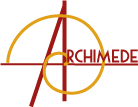Imitation, innovation et transfert de technologie : le faciès atlantique en péninsule Ibérique à l'âge du Bronze final
Auteur
Claire PEREZ, Doctorante en archéologie, travaillant sous la direction de Michel Pernot et Alexis Gorgues ; UMR 5607 - Ausonius, (CNRS/ Université de Bordeaux Michel de Montaigne). claiperez(at)gmail.com
Télécharger le texte complet - Download the full text
RÉSUMÉS : français - english CITER CET ARTICLE : réf. électronique
Résumé
Il existe un faciès atlantique en péninsule Ibérique défini principalement par un ensemble d’objets en alliages cuivreux (armes, outils, éléments de parure,...), des pratiques communes (dépôt) et un cadre géographique précis : les régions littorales et pré-littorales de l’océan Atlantique. En outre, les découvertes récentes montrent non seulement que la façade méditerranéenne, mais, plus généralement, l’ensemble de la Péninsule, possède des objets de mêmes types et des pratiques similaires. Il s’agit alors de s’interroger sur cette répartition et sur la place de ces artefacts dans les sociétés de l’époque. Trois interrogations orientent les recherches :
- S’agit-il du même faciès, dont les limites géographiques seraient plus vastes ? L’ensemble de la production et des pratiques serait alors caractérisé par une grande similarité.
- S’agit-il d’une imitation du faciès atlantique par les populations d’autres sphères culturelles ? Il existerait donc une reconnaissance de l’objet « atlantique », qu’on cherche à reproduire ou à obtenir.
- Enfin, s’agit-il d’un transfert de technologie ? Dans ce cas, ce qui intéresserait les populations n’est pas l’objet, mais plutôt l’amélioration de celui-ci : quelques éléments technologiques familiers aux hommes de l’ouest seraient adaptés sur des produits de l’est.
Une partie du corpus étudié dans le cadre de la thèse de doctorat apporte quelques arguments au débat. La méthode employée permet de valoriser et de hiérarchiser chacun des éléments descriptifs ayant servi jusque-là à établir les anciennes typologies. Ces éléments devront être comparés les uns aux autres, en respectant le paramètre de variabilité − trop souvent oublié − lié aux impondérables de l’artisanat. Nous verrons alors que la chronologie n’explique pas tout et que le facteur technologique jouait un rôle majeur pour les populations du Bronze final de la péninsule Ibérique.
Mots-clés : Âge du Bronze final, péninsule Ibérique, faciès atlantique, mobilier métallique, transferts de technologies, cultures et techniques.
Abstract
There is an archaeological facies of Atlantic regions in the west lands of Europe, mainly defined by a set of objects in copper alloys (weapons, tools, items of ornament,...), by common practices (deposit) and by a definite geographical area : the coastal and pre-coastal zones of the Atlantic Ocean. It should be noted that burial practices, domestic architecture or potteries are of different natures, which make it impossible to call it a homogeneous culture. In the Iberian Peninsula, recent findings show that this facies is wider : not only the Mediterranean seaboard, but, more generally, the whole peninsula yield similar material and practices. Since a few years, investigators wonder about the existence of this complex and try to identify its features. It seems then important to examine the distribution and the role of these artifacts in the societies of that time. Three questions guide the research :
- Is it the same facies, whose geographical boundaries would be wider ? The entire production and practices would be then characterized by a high similarity.
- Is it an imitation of the Atlantic facies, made by people from other cultural spheres ? There was therefore a recognition of the ‘Atlantic’ object, that one sought to replicate or to obtain.
- Finally, is it a transfer of technology ? In that case, people had no interest in the object itself, but rather in its improvement : some technological elements familiar to the Western men were adapted with products coming from the East.
A part of the corpus studied in the doctoral dissertation provides some arguments in the debate. The method used allows a valuation and a ranking of each descriptive elements which served previously to establish past typologies. These elements should be compared to each other, in accordance with the variability parameter – too often forgotten –, linked to the imponderables of handicraft. We will thus see that the chronology does not explain everything and that the technological factor played a major role for populations of the Late Bronze Age in the Iberian Peninsula.
Keywords: Late Bronze Age, Iberian Peninsula, Archaeological Facies of Atlantic Regions, Metallic Artifacts, Technology Transfers, Cultures and Techniques.
Citer cet article
C. PEREZ, « Imitation, innovation et transfert de technologie : le faciès atlantique en péninsule Ibérique à l'âge du Bronze final », Archimède. Archéologie et histoireancienne[En ligne] 1, 2014, p. 238-244. Mis en ligne le 5-11-2014.
URL: archimede.unistra.fr/fileadmin/upload/DUN/archimede/Revue_Archimede_RAHA/Numero_1/21_Archimede_N1_PEREZ.pdf
Droits d'auteur
Tous droits réservés




